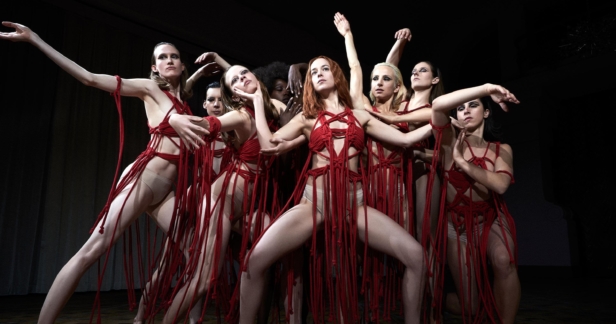In all his work so far, Italian director Luca Guadagnino has shown a truly uncompromising, unique vision. Unsurprisingly, his Suspiria comes across as an homage rather than a copy of Argento’s masterpiece. But the 1977 film is a little miracle, an inimitable jewel; what could ever be a fitting tribute?
Guadagnino thankfully avoids creating a superficial likeness to the original film. The peculiar Art Deco and Art Nouveau architecture of the settings remains, but the director opts for a more realistic representation of 1977 Berlin, the time and place where his film is set. Besides the more true-to-life sets, everything looks as though it was perceived through the haze of the 1970s, with greyness and shadows replacing the vivid colours and stark contrast that characterised Argento’s film. It is a bold change, but one that pays off: that visual sense of uneasiness echoes the violence that unfolds as pupils of the Markos Dance Academy disappear in disturbing circumstances.
The unsettling quality in Argento’s dramatic use of colours seems transposed here to the film’s editing and framing — Guadagnino breaks all the rules of camera angles that even the most casual of cinephiles has internalised. And yet the effect never feels arbitrary — his rhythm is implacable, every shot an incision bringing us ever closer to the story’s monstrous core.
Viscerally felt throughout, this morbid undercurrent of hostility explodes in sequences of unflinching violence — all involving dance. Guadagnino does not hesitate to connect the disquieting bodies of contemporary dance with the body horror of witch rituals. This is only one of many ways his Suspiria appears over-the-top and a little goofy, but in a good way: this is a film without limits, and you never know what’s coming.
Guadagnino seems keen to ground the film in reality, associating this violence with the bloody events around the Baader-Meinhof Gang. Yet it feels slightly beside the point to look for a secret meaning in Suspiria: whether an allegory or not, it remains a success in offering a terrifying, original, and apt response to Argento’s classic.
